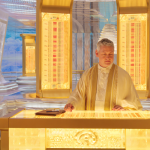Master the Investment Game with Cognitive Dissonance Psychology
Aug 3, 2024
In the labyrinthine world of financial markets, where fortunes are made and lost on the razor’s edge of decision-making, the astute investor must look beyond mere numbers and charts. The true master of this grand game understands that the battlefield lies not in the flickering screens of trading terminals but in the intricate folds of the human mind. In cognitive dissonance, we find the key to unlocking unprecedented investment success.
Cognitive dissonance, that uncomfortable tension arising from conflicting beliefs or behaviours, is not merely a psychological curiosity but the lifeblood of market inefficiencies. Voltaire once said, “Doubt is not a pleasant condition, but certainty is absurd.” We find the seeds of opportunity in this doubt and internal conflict.
The Investor’s Tightrope: Balancing Unwavering Conviction with Adaptive Flexibility
The first principle in mastering cognitive dissonance is to embrace the paradox of unwavering conviction coupled with infinite flexibility. This seemingly contradictory stance allows the investor to hold firm to their analysis while remaining open to new information that may invalidate their position.
Consider the case of the 2008 financial crisis. Many investors, blinded by years of steady growth and the perceived infallibility of the housing market, clung to their positions even as the foundations crumbled beneath them. However, those who mastered cognitive dissonance could maintain their conviction in long-term economic growth while flexibly adapting to the short-term reality of market collapse.
This approach is exemplified by the actions of certain hedge funds that not only survived but thrived during the crisis. By maintaining a core belief in the financial system’s eventual recovery, these funds could strategically acquire distressed assets at fire-sale prices. Simultaneously, their flexibility allowed them to hedge their positions and profit from the downturn through short-selling and credit default swaps.
To implement this strategy:
1. Develop a robust investment thesis based on thorough research and analysis.
2. Continuously seek information that challenges your thesis, actively embracing cognitive dissonance.
3. Establish clear, quantifiable criteria for reevaluating your position.
4. Implement a scaled entry and exit system for flexibility within your overall conviction.
Swimming Against the Tide: Harnessing Cognitive Dissonance for Contrarian Profits
“The public is right during the trends but wrong at both ends,” observed a legendary speculator of the early 20th century. This insight cuts to the heart of how cognitive dissonance can be weaponized for investment success. The masses, driven by the comfort of conformity, often experience cognitive dissonance when confronted with information that contradicts the prevailing narrative. The savvy investor, however, learns to thrive in this discomfort.
A prime example of this principle in action can be found in the contrarian bets made against the subprime mortgage market in the mid-2000s. While most investors remained convinced of the housing market’s invincibility, a select few embraced the cognitive dissonance between soaring home prices and deteriorating loan quality. By thoroughly investigating the underlying assets and questioning the prevailing wisdom, these contrarians positioned themselves to profit immensely from the eventual market collapse.
To harness the power of contrarian thinking:
1. Develop a systematic approach to identifying and quantifying market sentiment.
2. Cultivate a network of diverse information sources to challenge your assumptions.
3. Practice mental exercises to become comfortable with holding unpopular opinions.
4. Implement risk management strategies that allow you to maintain contrarian positions in the face of short-term market movements.
Turning Market Panic into Golden Opportunities: The Alchemy of Fearless Investing
“The market is a device for transferring money from the impatient to the patient,” observed the sage of Omaha. This transfer is facilitated by the cognitive dissonance experienced during periods of extreme market fear. The master investor learns to transmute this base metal of panic into the gold of opportunity.
During the March 2020 COVID-19 market crash, fear gripped the global markets with unprecedented ferocity. The VIX, often called the “fear index,” spiked to levels not seen since the 2008 financial crisis. The cognitive dissonance between the dire short-term outlook and long-term economic prospects was paralyzing for most. However, those trained to embrace this dissonance saw a once-in-a-generation opportunity.
These investors could acquire high-quality assets at deeply discounted prices by recognizing that the market’s reaction was driven more by uncertainty than fundamental economic changes. Companies like Amazon, Netflix, and Zoom—whose business models were strengthened by the pandemic—saw their stocks plummet along with the broader market, creating ideal entry points for the cognitively adept investor.
To alchemize fear into opportunity:
1. Develop a quantitative framework for assessing market fear, incorporating indicators like the VIX, put/call ratios, and sentiment surveys.
2. Create a watchlist of high-quality assets to target during extreme fear.
3. Implement a dollar-cost averaging strategy specifically for market downturns, automatically increasing investment during periods of heightened fear.
4. Cultivate emotional resilience through practices like meditation and scenario planning to maintain clarity during market stress.
Schrödinger’s Portfolio: A Quantum Approach to Investing
In quantum mechanics, we encounter fascinating concepts like superposition, where particles can exist in multiple states simultaneously until observed. This idea, famously illustrated by Schrödinger’s cat thought experiment, can be applied metaphorically to investment strategies, giving rise to Schrödinger’s Portfolio.
The Quantum State of Investments
Just as Schrödinger’s cat is alive and dead until the box is opened, a well-constructed investment portfolio can be considered bullish and bearish until market conditions “collapse” its state. This approach encourages investors to:
1. Maintain cognitive flexibility: Hold multiple, even contradictory, perspectives on market conditions and individual investments.
2. Embrace uncertainty: Recognize that the future state of the market is inherently unpredictable, much like quantum particles.
3. Prepare for multiple outcomes: Structure a portfolio that can benefit from various market scenarios.
Implementing Schrödinger’s Portfolio
To put this quantum-inspired approach into practice, consider the following strategies:
1. Develop dual theses: Create bullish and bearish scenarios for each investment, assigning probabilities to each.
2. Employ a barbell strategy: Combine high-risk, high-potential investments with conservative, capital-preserving positions.
3. Utilize options strategies: Implement straddles or strangles to profit from significant price movements in either direction.
4. Regular reassessment: Continuously update your bull and bear cases as new information becomes available, adjusting positions accordingly.
Historical Example: The Dot-Com Era
The dot-com boom and bust of the late 1990s and early 2000s illustrates Schrödinger’s Portfolio concept in action. Successful investors during this period:
Recognized the transformative potential of the internet while acknowledging market excesses.
Maintained a “quantum superposition” of bullish and bearish perspectives. We selectively invested in companies with sound business models while preparing for a potential market correction.
The Socratic Investor: Embracing the Power of Knowing What You Don’t Know
“I know that I know nothing,” proclaimed Socrates, encapsulating a paradox at the heart of mastery of cognitive dissonance. The wise investor understands that the more they learn, the more they realize how much remains unknown. This humility, far from being a weakness, becomes a source of tremendous strength in the financial markets.
Consider the rise of algorithmic trading and artificial intelligence in investment management. Many traditional investors, faced with the cognitive dissonance of their existing knowledge becoming obsolete, retreated into denial or despair. However, those who embraced the paradox of knowledge and ignorance saw an opportunity to evolve.
By acknowledging the limitations of human cognition while leveraging their unique insights and experience, these investors developed hybrid approaches that combined the best of human intuition with the power of machine learning. Firms like Renaissance Technologies and Two Sigma have demonstrated the incredible potential of this synthesis, consistently outperforming the market by embracing both cutting-edge technology and timeless human wisdom.
To harness the paradox of knowledge and ignorance:
1. Cultivate a beginner’s mindset, approaching each investment with fresh eyes and a willingness to learn.
2. Develop a systematic process for identifying and filling knowledge gaps in your investment approach.
3. Collaborate with experts from diverse fields to gain new perspectives on market dynamics.
4. Implement a continuous learning program, dedicating weekly time to exploring new investment concepts and technologies.
Conclusion: The Eternal Dance of Dissonance and Harmony
As we conclude this exploration of cognitive dissonance in the investment realm, we are reminded of Henry David Thoreau’s words: “The man who keeps his ear close to the ground misses the music of the spheres.” The master investor must learn to dance to both the earthly rhythms of market data and the celestial harmonies of human psychology.
Cognitive dissonance is far from an obstacle to overcome; it is the fuel that powers extraordinary investment success. By embracing paradox, cultivating contrarian courage, alchemizing fear, maintaining quantum perspectives, and balancing knowledge with ignorance, the investor transcends the limitations of conventional thinking.
In this grand game of finance, where the stakes are ever-rising and the rules ever-changing, it is not the strongest nor the most intelligent who survive but those most responsive to change. And we develop this supreme adaptability through the mastery of cognitive dissonance.
Let us then stride boldly into the markets, armed with the sword of analysis and the shield of psychological insight. In the words of Oscar Wilde, “The man who sees both sides of a question is a man who sees absolutely nothing.” Our task is not to eliminate cognitive dissonance but to harness it—to see both sides and yet act decisively, doubt everything, and believe in the impossible.
In this eternal dance of dissonance and harmony, of fear and greed, of boom and bust, we find not just profit but profound wisdom. In mastering the investment game through cognitive dissonance psychology, we master the markets and ourselves. And in that mastery lies the true fortune, far greater than any mere wealth accumulation.













